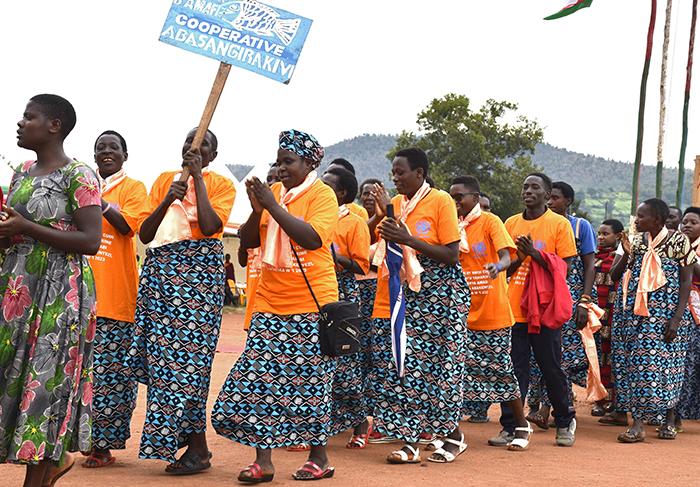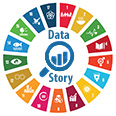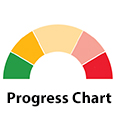Gender equality

Women in the fishing industry in Burundi demonstrate against gender-based violence during an annual campaign for the elimination of violence against women.
© UN Women/Alain Gashakaregional and global scales are top priorities.
The dismantling of discriminatory laws is encouraging but gaps persist, notably in land rights
Data from 120 countries show that from 2019 to 2023, 56 positive legal reforms focused on removing discriminatory laws and establishing legal frameworks to advance gender equality. Twenty-two reforms centred on equal rights to employment and economic benefits and 18 on stopping violence against women. The reforms included lifting restrictions on women working in specific sectors, guaranteeing equal remuneration for work of equal value and prohibiting marital rape. Gaps remain, however; no reporting country earned a perfect score across all areas of legislation.
Legal protections of women’s land rights remain grossly inadequate. Among 77 countries, only 20 per cent has high levels of protection. Only 9 countries have legal provisions for financial resources to strengthen women’s land ownership. Just 23 countries have quotas ensuring women are represented in land administration or management institutions; 13 are in sub-Saharan Africa.
Positive legal reforms by area of law, 2019–2023 (number)

Limited data mask far greater risks of intimate partner violence among women with disabilities
Existing evidence shows that the prevalence of intimate partner violence, in all forms, is higher among women with disabilities than those without disabilities. Data from four countries in Asia and the Pacific indicate that in Mongolia, 41 per cent of women with disabilities has experienced physical violence by a partner compared to 28 per cent of women without disabilities. In Viet Nam, 1 in 5 women with disabilities has been subjected to sexual violence by an intimate partner compared to 2 in 15 women without disabilities. Differences in the prevalence of physical and/or sexual violence range from 6 to 16 percentage points in the four countries.
Prevalence estimates are limited by the underrepresentation of women with disabilities in population-based surveys on violence against women and by the non-inclusion of forms of violence specific to women with disabilities. Without data, women with disabilities remain “invisible” in policies, prevention and response strategies.
Prevalence of lifetime physical, sexual and physical and/or sexual intimate partner violence among ever-partnered women aged 15‒64, by disability status, latest data from 2017 or 2019 (percentage)

Harmful practices are declining but not at rates keeping up with population growth
Child marriage and female genital mutilation violate the rights of girls and have lifelong consequences. An estimated 640 million girls and women were married in childhood globally, with one third in India alone. Some progress has been made. One in five girls was married before 18 today compared to one in four 25 years ago; 68 million child marriages were averted in this period.
Over 230 million girls and women have undergone female genital mutilation. Some countries have made strides towards ending it, but new estimates show an increase of 30 million cases compared to eight years ago. In Africa, over 144 million girls and women have undergone the practice, with notably high levels in Djibouti, Guinea and Somalia, where at least 90 per cent of girls and women are affected. Asia and the Middle East are home to significant numbers affected by female genital mutilation as well, at over 80 million and over 6 million, respectively. Demographic trends pose challenges, as populations are projected to grow fastest in regions where harmful practices are common.
From legislatures to corporate boards, women have made limited gains in leadership 26.9 per cent of seats in national parliaments, up from 22.3 per cent in 2015. Only six countries
Women’s political participation remains constrained. As of 1 January 2024, women occupied 26.9 per cent of seats in national parliaments, up from 22.3 per cent in 2015. Only six countries had 50 per cent or more women in the lower or single chamber (Andorra, Cuba, Mexico, Nicaragua, Rwanda and the United Arab Emirates). Two lower chambers now have no women members (Oman and Yemen), down from five in 2015. In local government, women occupied 35.5 per cent of elected seats in 2023. Gender quotas largely determine progress.
While women hold 40 per cent of global employment, they only occupied 27.5 per cent of managerial positions in 2022, the same share as in 2016. Parity in managerial roles will take 176 years at current rates of change, with discrimination, restrictive laws and inadequate social protection creating daunting barriers. Sub-Saharan Africa shows progress is possible. It has achieved an 11.3 percentage-point increase in female managers since 2000, reaching 38 per cent in 2022. The global increase was only 2.8 percentage points over the same period.
Heavy burdens of unpaid domestic and care work trap women in poverty and inequality
Despite variations across regions and country-specific differences, women in general perform most unpaid domestic and care work. This disproportionate burden is amplified in lower-income households, contributing to poverty, inequality and precariousness, including by limiting labour market participation.
On average, each day, women spend 2.5 times more hours on unpaid domestic and care work than men. Regional disparities are marked, at five times more in Northern Africa and Western Asia compared to about two times more in Oceania, Europe and Northern America. Differences are primarily attributed to men allocating more time to unpaid work than to regional differences among women's engagement in unpaid labour.
Proportion of time spent on unpaid domestic and care work by sex (percentage) and ratio between women and men (bubbles), 2000‒2022

Women’s empowerment in sexual and reproductive health decisions remains restricted globally, although positive strides are evident in some places
Data from 69 countries show that 56 per cent of married or in-union women aged 15‒49 can decide on their sexual and reproductive health and rights, ranging from 38 per cent in sub-Saharan Africa to over 80 per cent in Europe. Although 89 per cent of women can autonomously decide to use contraception, one in four cannot make health-care decisions or say no to sex. New data from 32 countries show that 19 have seen a positive trend in women’s ability to make decisions on sexual and reproductive health, particularly in Eastern and Southern Africa. Conversely, Western and Central Africa has experienced notable declines.
Socioeconomic factors such as household wealth, education and place of residence may shape these outcomes. For instance, data reveal shifts in the urban-rural gap, with some countries seeing decreased disparities and some, such as Armenia and Uganda, experiencing widening gaps. Understanding the trends is crucial in developing policies and programmes for vulnerable groups. Focusing on rural populations, the lowest wealth quintiles and individuals with limited education could help bridge significant gaps.
Proportion of women aged 15‒49 years who make their own decisions regarding sexual and reproductive health and rights, 2007‒2022 (percentage)


